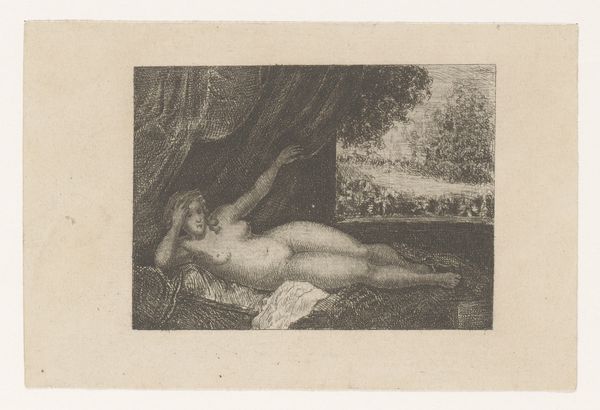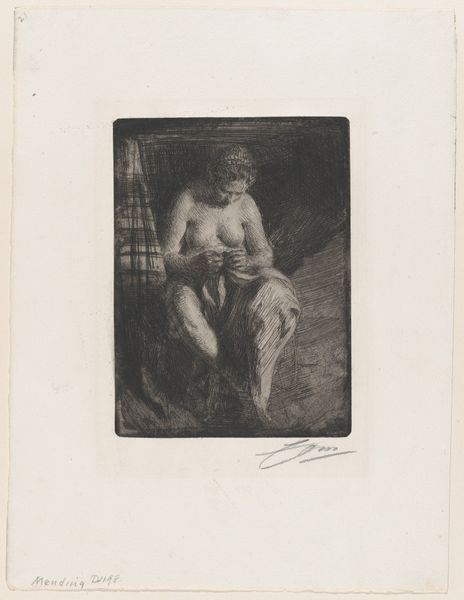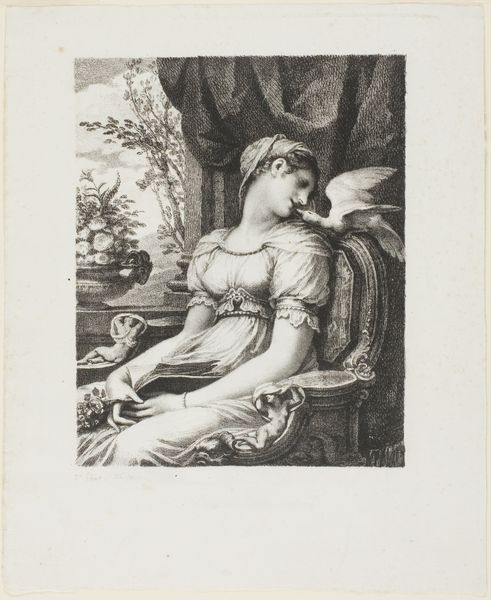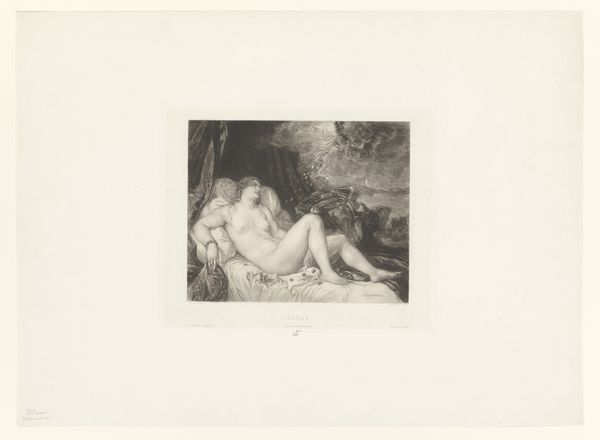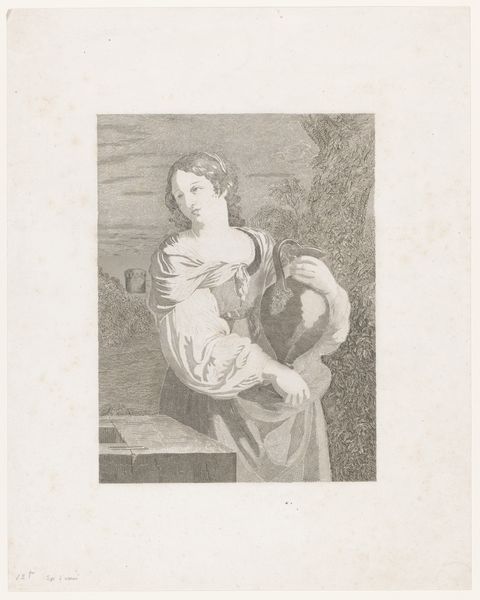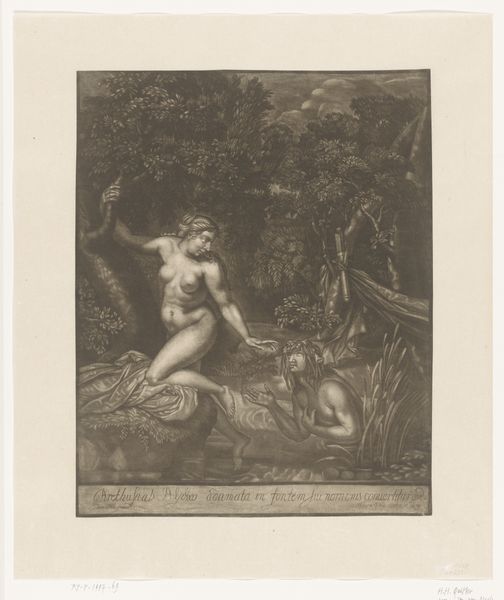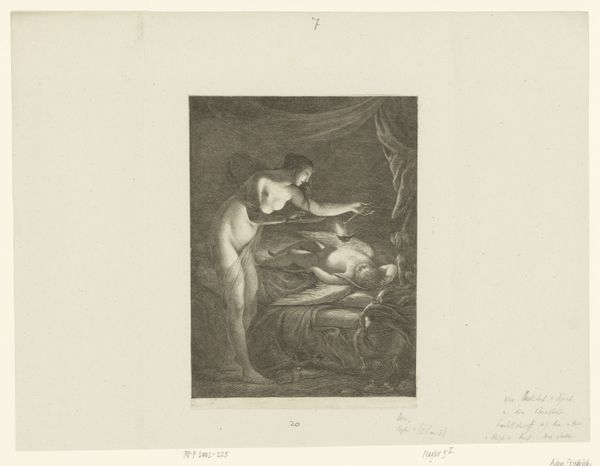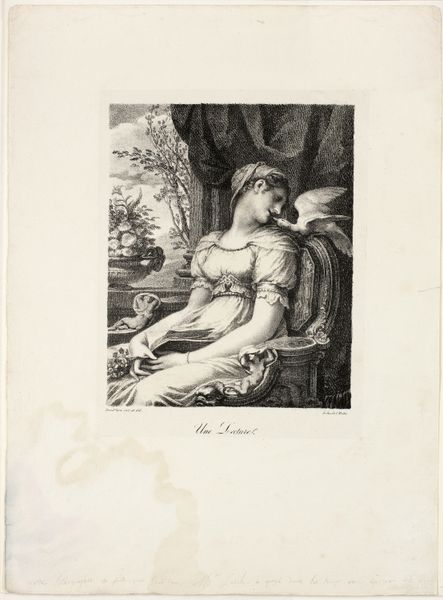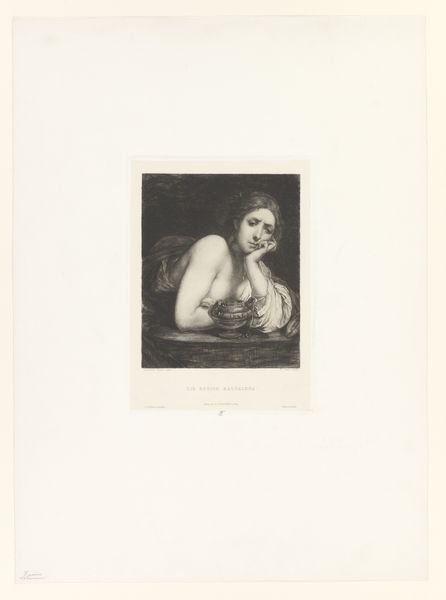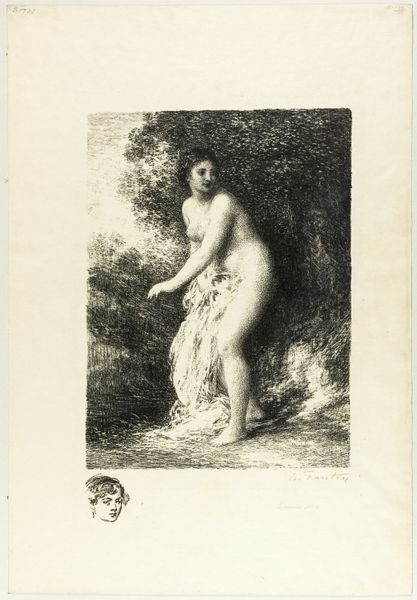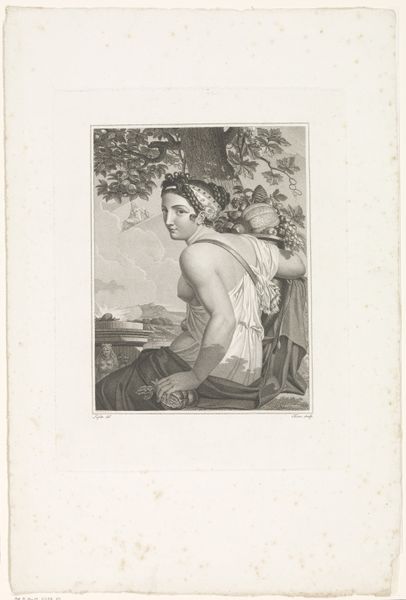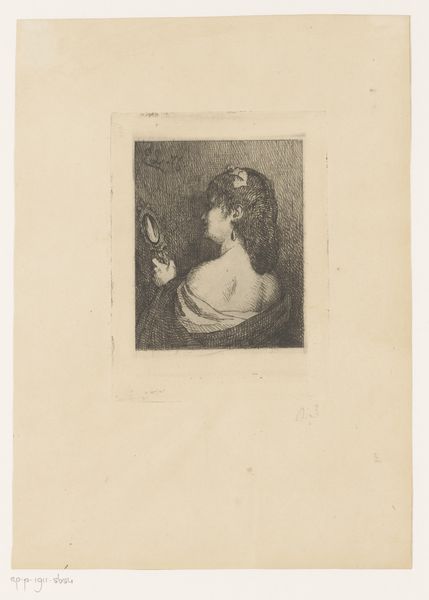
Dimensions: height 255 mm, width 173 mm
Copyright: Rijks Museum: Open Domain
Editor: So, this intaglio print is "Death of Cleopatra," dating from 1847 to 1889, by William Unger. I’m struck by how serene she looks, even with the snake at her breast. It’s such a dramatic scene, but so…still. What do you make of it? Curator: Stillness, yes, but there's also such incredible energy contained within that stillness, don't you think? The engraving technique itself—that painstaking, cross-hatched detail—seems to vibrate with a hidden life. Look closely at the landscape behind her, that churning water, a counterpoint to her surrender. Unger wasn't creating just a history painting but an echo of a psychological state, a woman embracing fate. The Romantics were really invested in that notion of sublime, overwhelming emotion. Does that resonate with you at all? Editor: I guess so, now that you mention the background… But why go to all this trouble to make a print? Couldn't Unger have just painted it? Curator: Aha! That's key. Prints democratize images. By making multiples, Unger takes this grand historical narrative – the fall of empires, a queen's tragic end - and makes it accessible. Suddenly, Cleopatra isn’t just for royalty, she is on sale at a mid-19th-century print shop for anyone with an interest in her and with wall space to spare! This idea of wider dissemination... Do you feel like it adds something to the reading of the artwork, a value that would be lost had this subject only been painted once? Editor: Hmm, hadn't thought about it that way. So it's about access, sharing the drama? I think I get that. Thanks, that changes how I see the whole thing. Curator: Precisely! Sometimes, beauty isn’t just about aesthetics; it’s about making grand ideas approachable.
Comments
No comments
Be the first to comment and join the conversation on the ultimate creative platform.
